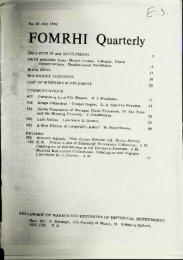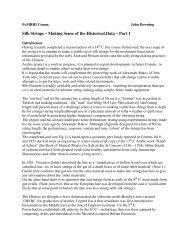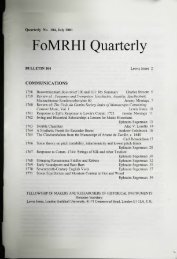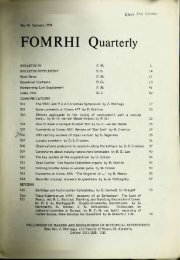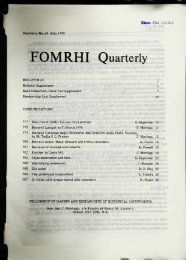•rf - FoMRHI
•rf - FoMRHI
•rf - FoMRHI
Create successful ePaper yourself
Turn your PDF publications into a flip-book with our unique Google optimized e-Paper software.
tant to bring the rod aa goickly as poasible from the heat<br />
source," where the tip la mede red hot, into the bore. To<br />
this end I lathed a funnel-shaped entrance to the guide tube<br />
and shaped the end of the rod to a point, ao that the hot rod<br />
could be quickly and dependably inserted.<br />
I wouìd ba most intereatea to heor from others who rnsy<br />
bave experimented with e similar technique, and alao from<br />
those who have successfully made alto Bhawms with more tra<br />
ditional boring method8.<br />
<strong>FoMRHI</strong> Com 33<br />
COLOURING OF INSTRUMENTS<br />
R. Lawrence<br />
August 1976.<br />
It is often difficult to decide or judge what the final colour of an instrument is going<br />
to turn out like. The following method enables a final result to be judged at an early<br />
stage.<br />
Take sheets of thin glass, about 12" x 6". Paint each of these sheets with your colour<br />
varnishes. Divide each sheet into about three bands, giving one or two coats to the<br />
first band, three or four to the second and five or six to the third.<br />
Give the instrument its first coats of clear varnish until it is ready for colouring.<br />
Then place one or more of the coloured glass sheets on top of the back, one can<br />
immediately judge the effect of different colour, or number of coats needed.<br />
-23-





